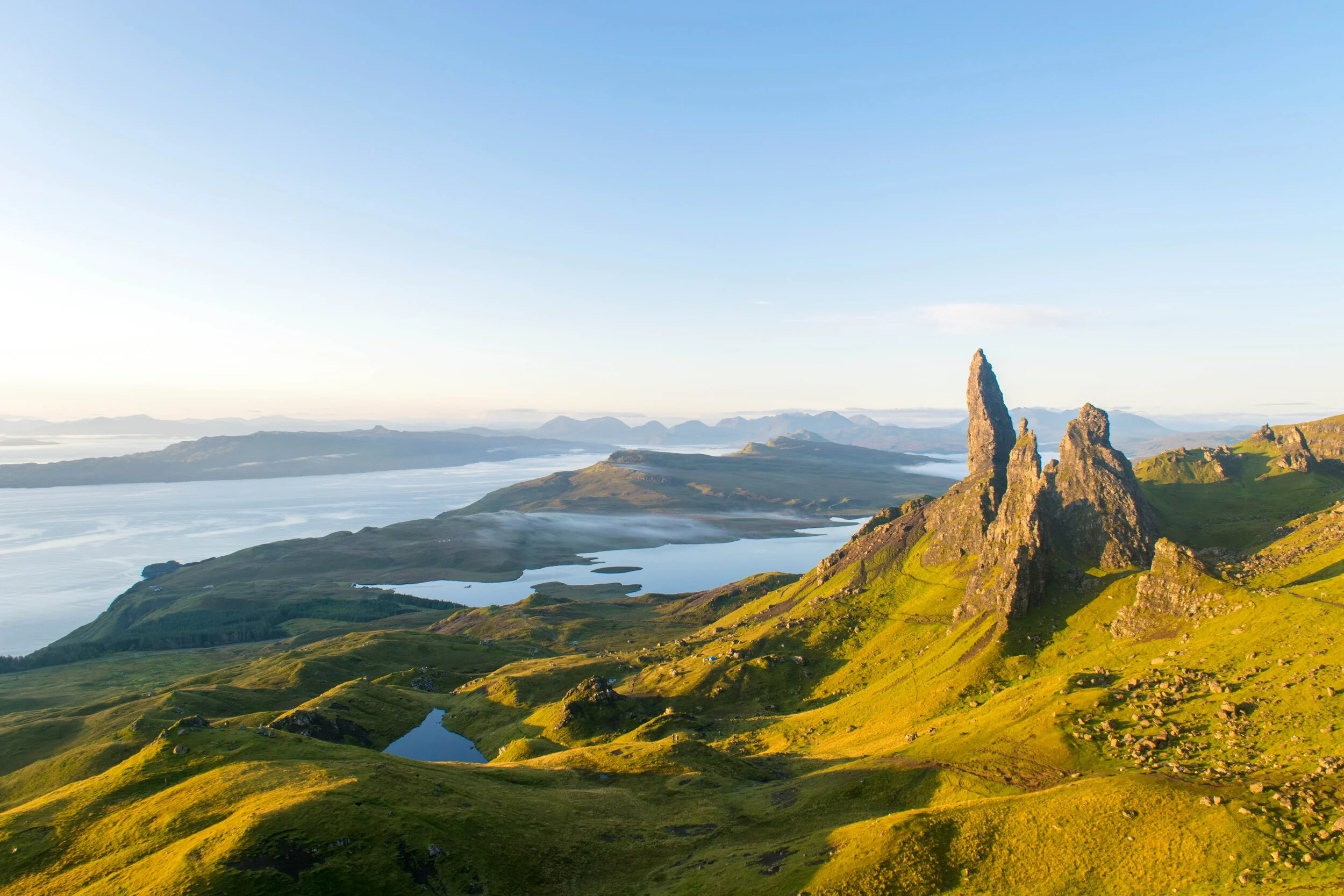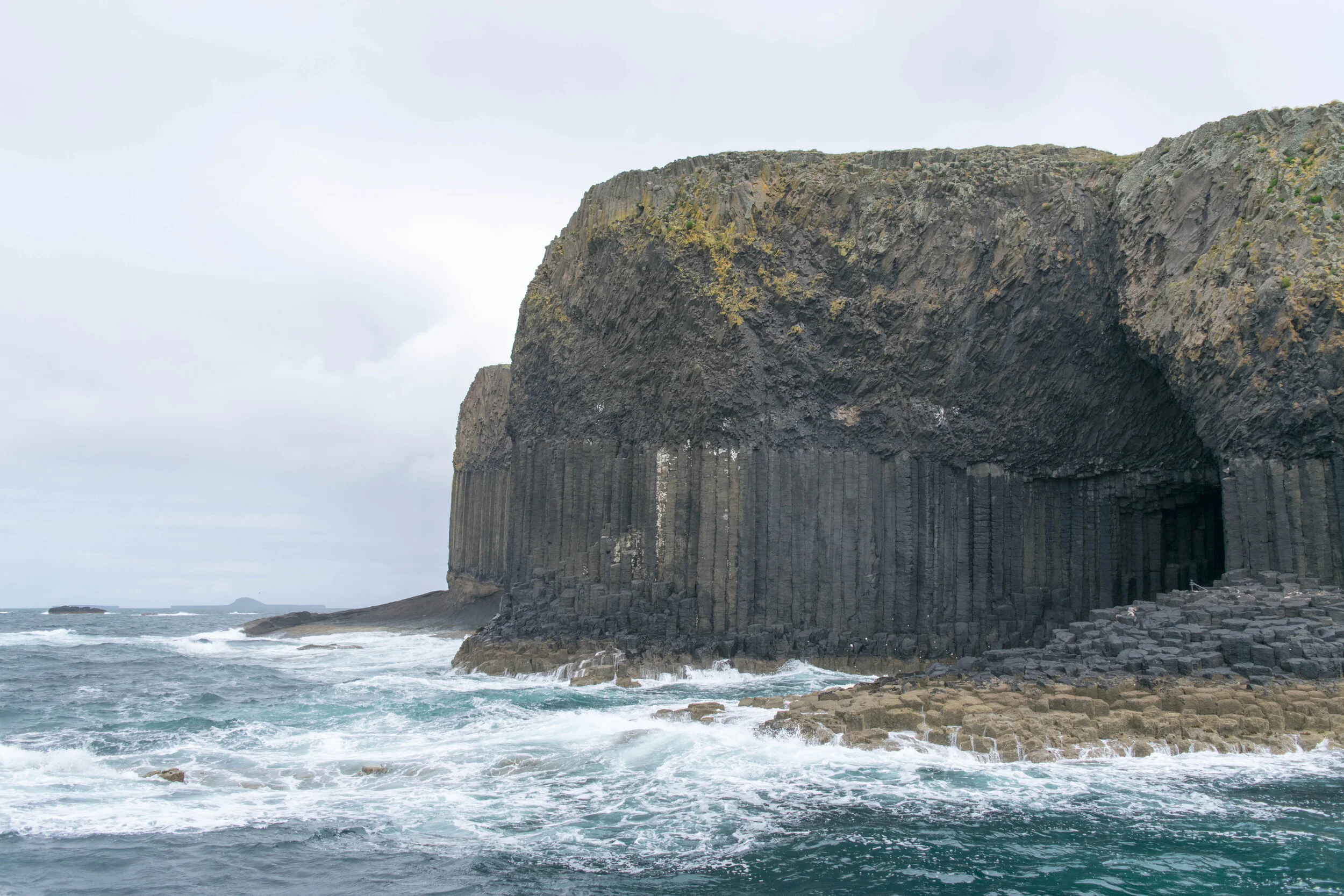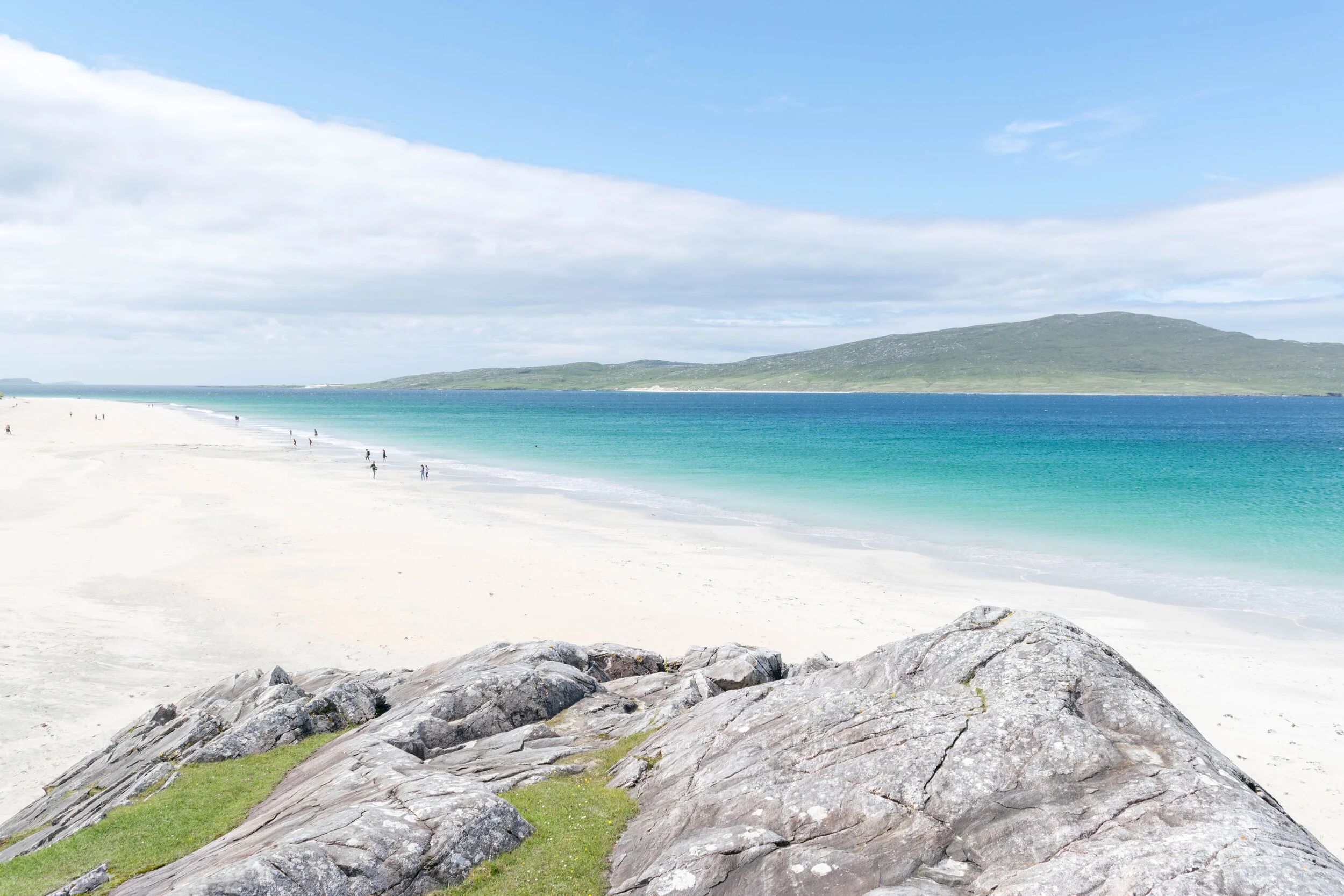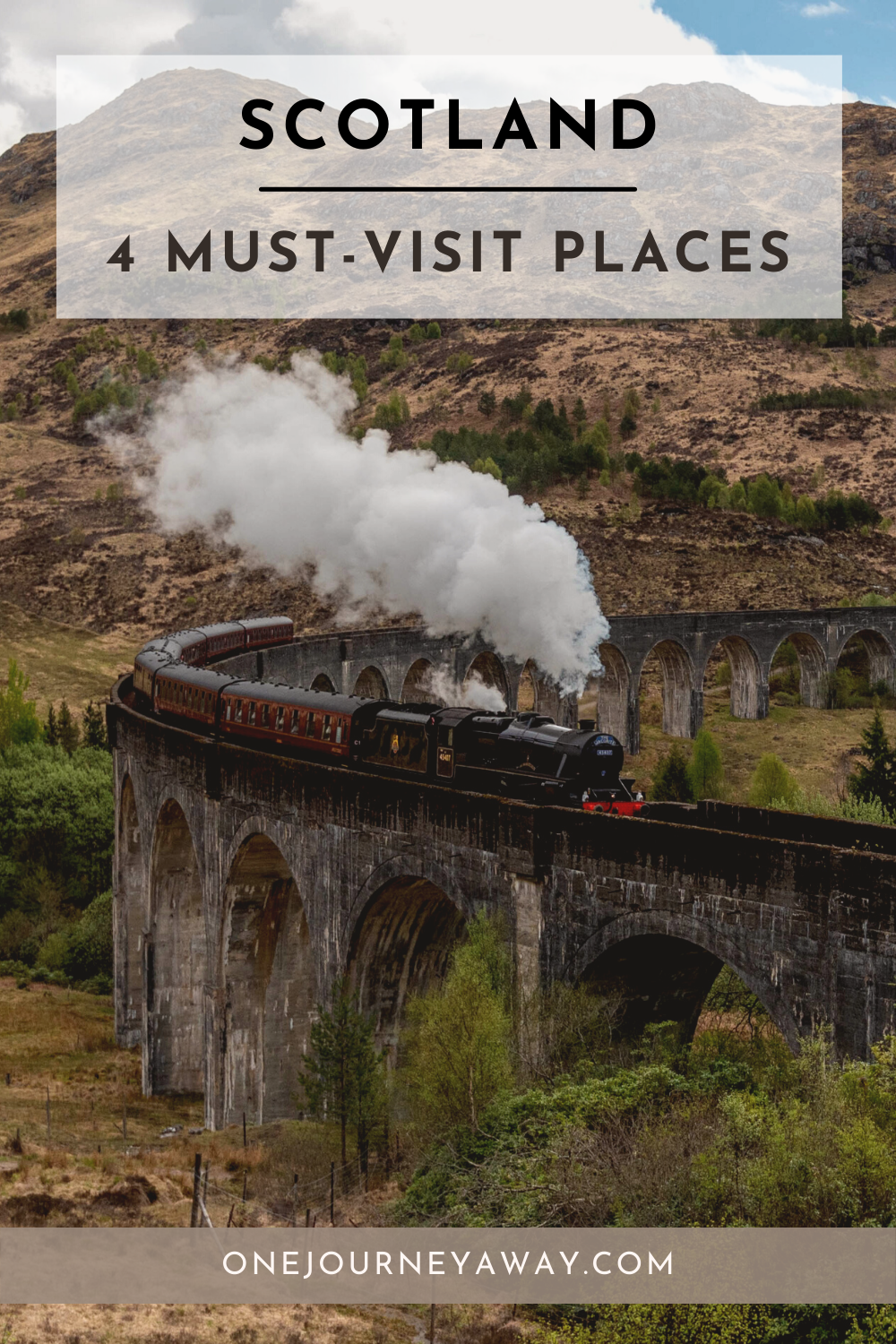4 Must-Visit Places in Scotland
Last updated: 14 October 2021
Scotland is an immensely beautiful country - a wee country, but a stunning one with character and grace. Before we dive into some of our must-visit places in Scotland, there is one thing you need to be wary of before travelling to Scotland…
Beware of the Highland Midge!
If you’ve never heard of midges before, they are really small flies, resembling fruit flies, which come in swarms in northwest Scotland between May and September. They like to bite any part of your skin that is exposed, creating itchy welts. As well, when they’re around you, you’ll know. Find out more about midges here.
Now, midges are not found in all corners of Scotland, but they can and do show up in the places listed below, hence the forewarning.
So what can you do? There are a number of products out there that are marked as midge repellent, and one that we personally use whenever we’re up in the Scottish Highlands in the summer is Avon’s Skin So Soft Original Dry Oil Spray. It’s not marketed as a repellent, but it was first used by the marines, who found it to be a wonderful repellent. The secret ingredient is citronella, which is a natural insect repellent. This Avon spray can be purchased online from Avon itself, eBay, Amazon, or even in some outdoor retailers.
The key is to lather any exposed body parts - face, ears, neck, hands, and ankles - before getting out of the car. And you’re unlikely to receive any bites! Now that you know to be aware of midges, let’s dive into some must-visit places in Scotland!
1. Altnafeadh, Glen Coe
Glen Coe is our all-time favourite place in Scotland. We’ve passed by at least ten times in all our road trips around Scotland, so we’ve seen it in every weather possible and it is always stunning. it is located northwest of Edinburgh in the Scottish Highlands, about a 2.5-hour drive away.
If you’ve seen ‘Glen Coe’ and ‘Glencoe’ before and are wondering what the difference is, let’s clear that up. Firstly, a glen is a U-shaped valley that is formed by glaciation. Glen Coe is the name of the glen itself. Glencoe is the village surrounding Glen Coe.
Glen Coe has a dark history. On 13 February 1692, approximately 30 members of Clan MacDonald of Glencoe were killed for not declaring allegiance to William III of England and II of Scotland and Mary II. That became known as the Massacre of Glencoe. More recently, Glen Coe has been featured in movies such as James Bond’s Skyfall.
The best vantage point is when you’re driving from Fort William towards Edinburgh. You can clearly see the U-shape of the valley and the wide open space is simply breathtaking. Stop on the side of the road (where you can park of course) for some photographs. On Google Maps, the point is called Altnafeadh.
2. Hike Up the Old Man of Storr, Isle of Skye
The Isle of Skye is the largest (and likely most popular) island in the Inner Hebrides of Scotland and is known for its rugged landscapes and wee villages. It sits even more northwest of Glen Coe, and is a nearly 6-hour drive from Edinburgh.
The Old Man of Storr is a massive pinnacle on a rocky hill. It can be seen from quite a distance and resembles an old man, hence the name. It was created after a big landslide and is one of the most photographed places on Skye, and for good reason.
A hike up to the Old Man of Storr offers some amazing views, but do be warned that the weather is very unpredictable on Skye. On one of our visits though, we were incredibly fortunate to get a super clear morning, where we hiked up to watch the sunrise.
It’s ideal to go for the sunrise as it’s quiet, peaceful, and not many other people will be around. An added bonus was that we didn’t see any midges until after we started our descent! It took us about 50 minutes to hike up, and the average time is 1 hour and 15 minutes. More information on the hike can be found here.
3. Watch the Jacobite Steam Train Pass Glenfinnan Viaduct (Mallaig Direction Only)
Since the release of the Harry Potter films, where the Jacobite Steam Train doubles as the Hogwarts Express, watching the Jacobite cross the Glenfinnan Viaduct has become a bucket list item, but it’s definitely not overrated. It is honestly such a cool experience to see the steam train pass by.
Keep in mind that the steam train only runs from about mid-April to October. The service runs in the Scottish Highlands from Fort William to Mallaig and back the same day. It’s advisable to only go when the train is heading to Mallaig because that’s when you’ll get the ‘proper’ view of the train. Let us elaborate.
When the train arrives at Mallaig, there isn’t a place for the train to turn around, so they simply plunk the head of the train to the back. This means the train’s head then runs kind of backwards on its way back to Fort William, and it just looks a bit odd.
Be sure to check the West Coast Railways website for the updated timetable. The general passing times for Mallaig-bound trains are 10.58 and 15.13. As there’ll likely be lots of other tourists around, make sure you’re early. Also keep in mind that after you park, you’ll have to walk around 10 minutes to get stationed at your viewpoint. We recommend following the path and then going to the left up the hill. The train will come from the opposite end of the viaduct and you’ll be able to capture it coming towards you.
4. Tour to Isle of Staffa
The Isle of Staffa is an uninhabited island off the Isle of Mull, also to the northwest of Edinburgh. Getting to the Isle of Mull takes over 4.5 hours by car, including a 1-hour ferry ride. As Staffa is a wee island that you’d spend only a few hours on, it makes sense to go if you’re visiting Mull as well.
If you know or have heard of Giant’s Causeway in Northern Ireland, then you have an idea of what Staffa looks like. The whole island is made of interlocking hexagonal basalt columns, with a famous part called Fingal’s Cave.
Legend has it that a Scottish giant challenged an Irish giant to a fight and they built a causeway so that they could meet. Giant’s Causeway in Northern Ireland and Staffa in Scotland are supposedly the remnants of this causeway.
We personally feel Staffa is much more impressive than Giant’s Causeway, yet Staffa seems to be very underrated or virtually unheard of when compared to Giant’s Causeway! To get to Staffa, you have to go via a tour company. We chose Staffa Tours and can’t fault them at all. Depending on sea conditions, you may be able to land and walk to Fingal’s Cave as well as around the island. If visiting in the spring or summer, you can usually spot a few puffins.
We would recommend going on a morning tour to Staffa in order to have the island more to yourself. Our boat had maybe ten people and it seemed that only one other boat was on the island at the same time. By the time we made it back to Mull, a few other boats were getting ready to leave for Staffa, and each boat seemed to have at least twenty people on board.
Have you ever been to any of these Scottish destinations before? Which one do you most want to visit? Let us know in the comments!


























Made famous by the Harry Potter franchise, The Jacobite steam train is on the bucket list for many people who visit Scotland. Read on to find out everything to know about how to see The Jacobite cross Glenfinnan Viaduct as well as how to ride the actual train!